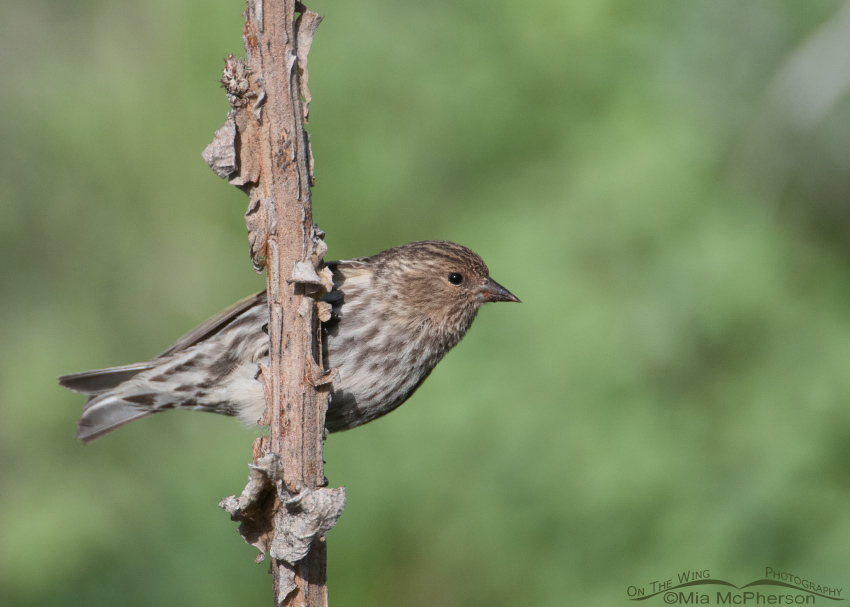 A Pine Siskin in Clark County, Idaho – Nikon D300, f6.3, 1/1600, ISO 640, +0.3 EV, Nikkor 200-400mm VR with 1.4x TC at 400mm, natural light
A Pine Siskin in Clark County, Idaho – Nikon D300, f6.3, 1/1600, ISO 640, +0.3 EV, Nikkor 200-400mm VR with 1.4x TC at 400mm, natural light
Last year in May on my first trip of the year up to Montana and Idaho I was able to take a few images of Pine Siskins in Clark County, Idaho. They are known to forage in tight flocks and they call most of the time, even in flight. The name Siskin is derived from the sounds it makes so it is also called “pine chirper”.
This image does not show the yellow wingbars (seen in this image) that can help differentiate it from House Finches but the narrow beak and short notched tail can help with identification.
The Pine Siskin I photographed last May was feeding in the pines and it came down lower to perch on dried stems from plants I didn’t identify.
Pine Siskins are highly gregarious and form nomadic flocks and they can be highly irruptive during the winter. I know I would love to see a flock of a hundred or more feeding in the winter standing out from the snow. Their summer and winter ranges spread across most of the U.S. and southern Canada.
I love to hear the soft, wheezy calls of these song birds when I am out in the field.
Life is good.
Mia
Click here to see more of my Pine Siskin photos plus facts and information about this species.


I love this feature on one of your little brown jobs. An exotic little brown job to me.
We were innundated with Pine Siskins one winter about 3 years ago. They were particularly attracted to a thistle feeder I’d made out of a plastic tennis ball container and some small dowels. They always arrived in a big, chattering flock and cleaned the feeder put in short time. At first I thought they were finches but the size of the flock, noise, small, pointy bills and notched tails identified them as Siskins. We weren’t aware of having seen them before, but my Canadian sister said, “Don’t send them up here! We have them every winter and they clean me out! I can’t afford them!” . I finally sent them back, anyway and haven’t seen them since.